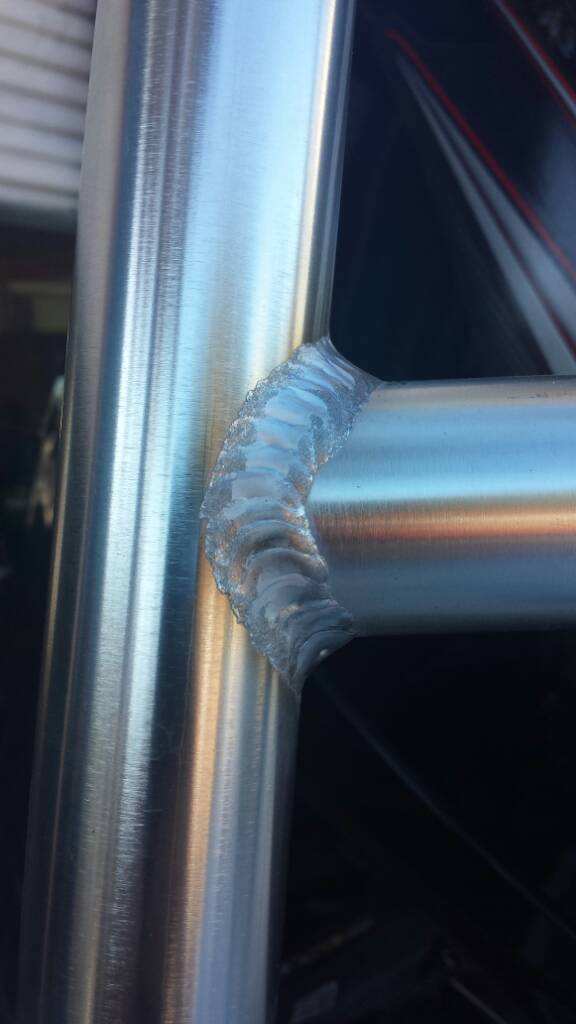Welding anodized aluminum

see more info on tig welding anodized on the forum
- HOME
- TIG WELDING ALUMINUM
- How to Tig Aluminum
- Welding Anodized Aluminum
Welding anodized aluminum
On Thu May 08 16:20:36 2008, the following results were submitted from the "Ask Your Biggest Welding Question" on weldingtipsandtricks.com:
how can i get a pulse gun not to disrupt anodized pipe? and the best way how to weld it
Guys who do welding anodized aluminum on anodized tuna towers and marine parts can give you some tips on this. Most of them hook up a switch on the torch and pulse weld manually by going from on to off again and again slightly overlapping puddles. This along with using a small tig cup with high argon flow rates seems to break though the anodized coating. Boat owners do not like welds with a bunch of sanding or wire brush marks.
What the pulse does whether done manually with a thumb switch, or with a machine that pulses, is it breaks thru the coating (which has much higher melting point than the aluminum base metal) but then drops the amperage quickly to avoid overtemping and blistering the aluminum base metal. The newer inverter power sources like the Miller Dynasty 350 really seem to excel pulsing like this. Its pretty rough on an old transformer machine. Spiking from 0 to 200 amps time and time again puts a whoopin on the components. The down side of a machine like a miller dynasty 350 is the cost.
Man, they are proud of those things. But they are awesome and give you more tools to work. I field tested one using all the different A/C waveforms ( advanced square wave, soft squarewave,triangle, and sinusoidal) and even did some metallurgical tests on the weld profiles. I was really impressed with it but 6500 bones is a bit steep for me. If I was welding marine tubing or tuna towers for a living, it would be a no brainer...I would get one. I found this link to a Miller article about a welding shop that uses the Miller Dynasty 350 for aluminum anodized tubing welds.
I remember reading another article a few years ago about a tuna tower contractor that was using Dynasty 300's with a trigger switch on the torch. Either way works. The benefits of the inverter are being able to adjust the Arc Cone to pinpoint the arc and limit the frosty cleaning action that is typical on other conventional machines. I like the old school Miller syncrowave 250 for most everything and I have been able to make it do just about anything I want to,,, but this is one application where the inverters just plain kick Ass. welding anodized not your thing?


















